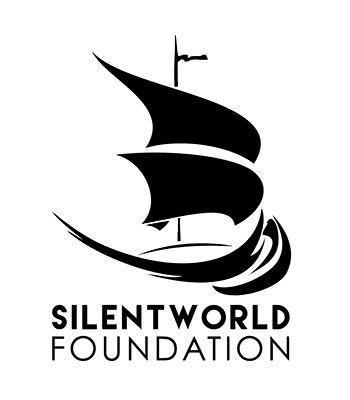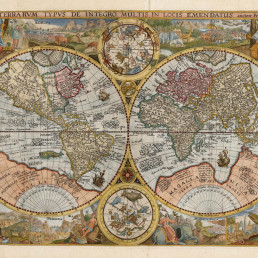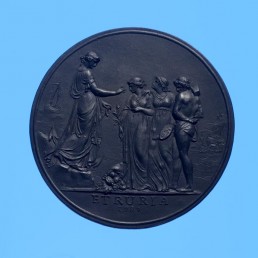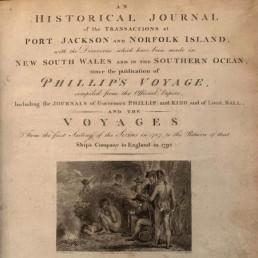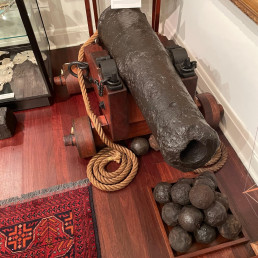
Name/TitleLead plate from the wreck of HMB ENDEAVOUR
About this objectHM Bark ENDEAVOUR, was a British Royal Navy research vessel commanded by Lieutenant James Cook on his first voyage of discovery, to Australia and New Zealand from 1769 to 1771. Launched in 1764 as the collier (coal transport) EARL OF PEMBROKE, she was purchased by the Navy in 1768 and renamed HM Bark ENDEAVOUR. The ship was 106 ft long and displaced 368 tons. On the 1769 voyage of discovery, along with the ship's master Robert Molineaux, ENDEAVOUR carried a crew of 94 sailors, scientists and marines, as well as ten 4-pounder cannons and twelve swivel guns.
Being the first European vessel to visit New Zealand since Abel Tasman's HEEMSKERCK in 1642, ENDEAVOUR became the first European vessel to make landfall on the east coast of Australia, when Cook landed in what is now known as Botany Bay, in New South Wales. Later, on 11 June 1770, the ship struck a reef, near today’s Cooktown. Cook ordered that the ship be lightened to help float off the reef. Iron and stone ballast, spoiled stores and all but four of the ship's guns were thrown overboard, eventually the ship was floated on the tide. ENDEAVOUR was beached at what is now known as Endeavour River for repairs and then resumed her course northward.
The Silentworld Foundation collection includes lead sheathing which was used to insulate the armoury and provide flash guards for the cannon, stone ballast, pig-iron ballast (kentledge) and cannon balls, all of which were located at the grounding site.
Date Madec1770
Period18th century
Medium and MaterialsLead
Object TypeMaritime Archaeology
Object numberSF001028
Copyright Licence![]() Attribution - Non-commercial - No Derivatives (cc)
Attribution - Non-commercial - No Derivatives (cc)
Explore by category
Maps and Charts
Date range: 1541-1836
Ship Models
Date range: 1629-1890
Maritime Paintings
Date range: 1793-1849
Manuscripts and Ephemera
Date range: 1768-c1850
Medallions & Convict Tokens
Date range: 1619-1880
Landscapes
Date range: 1768-c1850
Books
Date range: 1694-c1850
Currency and Shares
Date range: 1624-1823
Printed Material
Date range: 1541-1836
Maritime Archaeology
Date range: 1629-1854
Curator's corner
New acquisitions, staff favourites and curios
The mug is decorated with an underglaze and a blue transfer print. On the body, it is titled ‘Emigrants to Australia’. This type of body and glaze was discontinued by 1840. Comparison of the handle shape and the profile of the foot, point to the attribution of manufacture by the Davenport Factory.
Delta was a ship-rigged vessel with two decks and three masts. It was built in Dordrecht, Netherlands in 1839 at the shipyard of Jan Schouten and registered in the same port. Its hull was constructed of oak and sheathed in ‘yellow metal’. Delta was owned by H. van der Sande at the time of its loss and was engaged as a cargo trader.
The Delta carried 29 crew and passengers, while sailing from Melbourne to Batavia in ballast when wrecked at Kenn Reefs on 30 May 1854 whilst under the command of Captain J.G. Kunst. This vessel loss supports the pattern of shipwrecks located on a well-travelled shipping route that was poorly charted until the mid-nineteenth century. The crew of the Delta could see four other shipwrecks at Kenn Reefs at the time of their vessel’s loss.
Important image of a ship associated with Matthew Flinders, that would shortly become one of the most famous early shipwrecks in eastern Australian waters. This is a fine ship’s portrait, by one of the great exponents of the art
